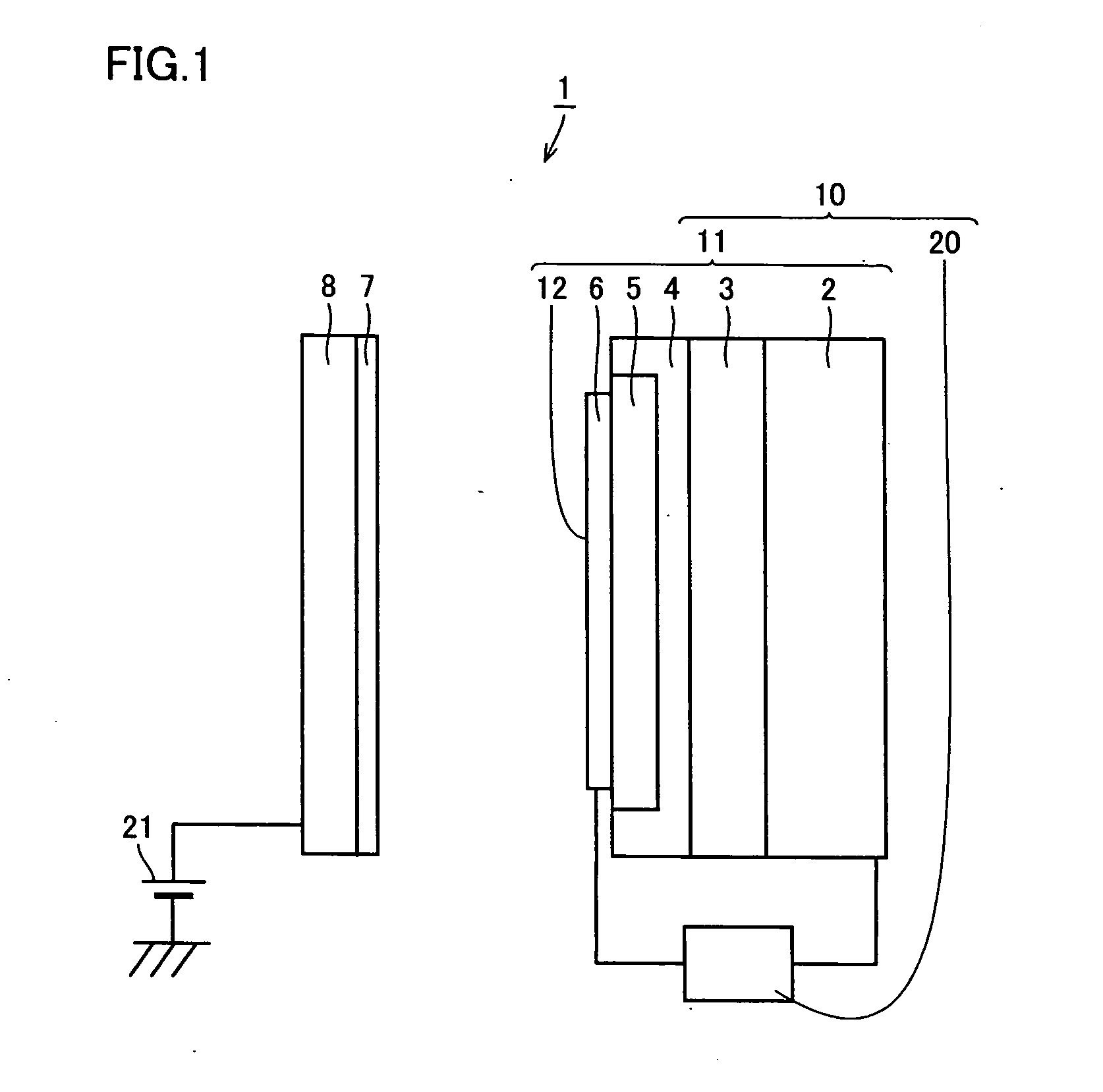Electron emitter, charger, and charging method
a technology of electric emitters and chargers, applied in the direction of static indicating devices, instruments, corona discharges, etc., can solve the problems of accelerating the degradation of photoreceptors, requiring high voltage power supplies of about 4 to 10 kv, adversely affecting human bodies, etc., and achieve the effect of stably driving
- Summary
- Abstract
- Description
- Claims
- Application Information
AI Technical Summary
Benefits of technology
Problems solved by technology
Method used
Image
Examples
Embodiment Construction
[0026] In the following, the embodiments of the present invention will be described. It is noted that in the figure of the specification, the same reference characters refer to the same parts or corresponding parts.
[0027]FIG. 1 shows a schematic conceptual view of a preferred exemplary charger in accordance with the present invention. This charger 1 includes an electron emitter 10 and a photoreceptor 7 as a body to be charged that is arranged opposing to and spaced apart from an electron emitting surface 12 that is a surface of an acceleration electrode 6 of electron emitter 10.
[0028] Electron emitter 10 includes an electron emitting element 11 constituted with a base electrode 2 formed of a conductive substrate, an n-type silicon layer 3 formed on base electrode 2, a non-doped thin polysilicon layer 4 formed on n-type silicon layer 3, a porous polysilicon layer 5 formed by rendering a part of polysilicon layer 4 porous, and an acceleration electrode 6 formed of a gold thin film f...
PUM
 Login to View More
Login to View More Abstract
Description
Claims
Application Information
 Login to View More
Login to View More - R&D
- Intellectual Property
- Life Sciences
- Materials
- Tech Scout
- Unparalleled Data Quality
- Higher Quality Content
- 60% Fewer Hallucinations
Browse by: Latest US Patents, China's latest patents, Technical Efficacy Thesaurus, Application Domain, Technology Topic, Popular Technical Reports.
© 2025 PatSnap. All rights reserved.Legal|Privacy policy|Modern Slavery Act Transparency Statement|Sitemap|About US| Contact US: help@patsnap.com



